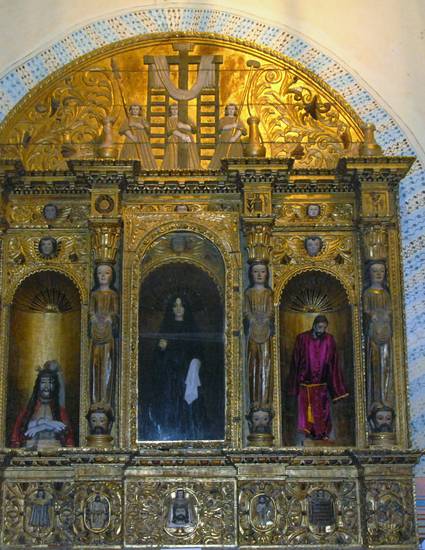
Article
The Retablos of Teabo and Mani: The Evolution of Renaissance Altars in Colonial Yucatán
Arts
(2021)
Abstract
From the turn to seventeenth through the early eighteenth century, three retablos (altarpieces) were created in Yucatán that relied on a similar Renaissance design. The retablos located in the ex-convents of Mani and Teabo all adopt the Spanish sixteenth-century Renaissance style of the Plateresque. Further, the retablos are connected by the inclusion of caryatid framing devices that establishes a strong affinity among the works. Two of the retablos are located in Mani: the Retablo of San Antonio de Padua and the Retablo of Nuestra Señora de Soledad (or sometimes called the Dolores Retablo). At Teabo is the Retablo de Santa Teresita del Niño Jesús (or Las Ánimas). This paper explores the relationships among the retablos by considering their iconography and their styles to address the retablos’ dates and their current locations. While offering insights about these retablos, this contribution also provides a rich discussion of the thriving artistic industry that was present in Yucatán.
Keywords
- Retablo,
- Renaissance,
- Caryatids,
- Virtues,
- Teabo,
- Mani,
- Yucatan,
- Plateresque,
- La Soledad,
- Dolores,
- San Antonio,
- Las Animas,
- Crucifixion,
- Passion,
- Santa Teresita
Disciplines
Publication Date
Spring April 6, 2021
DOI
https://doi.org/10.3390/arts10020023
Citation Information
C. Cody Barteet. "The Retablos of Teabo and Mani: The Evolution of Renaissance Altars in Colonial Yucatán" Arts Vol. 10 Iss. 2 (2021) p. 23 Available at: http://works.bepress.com/charles-barteet/17/
